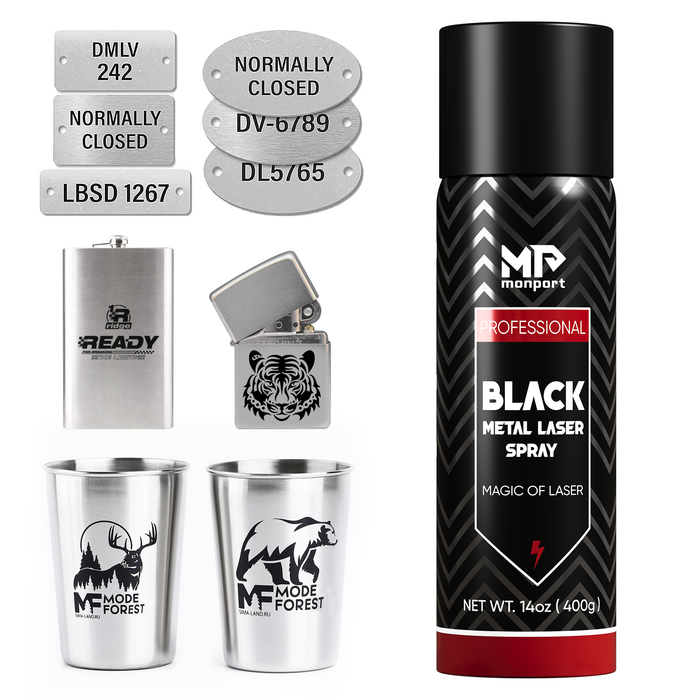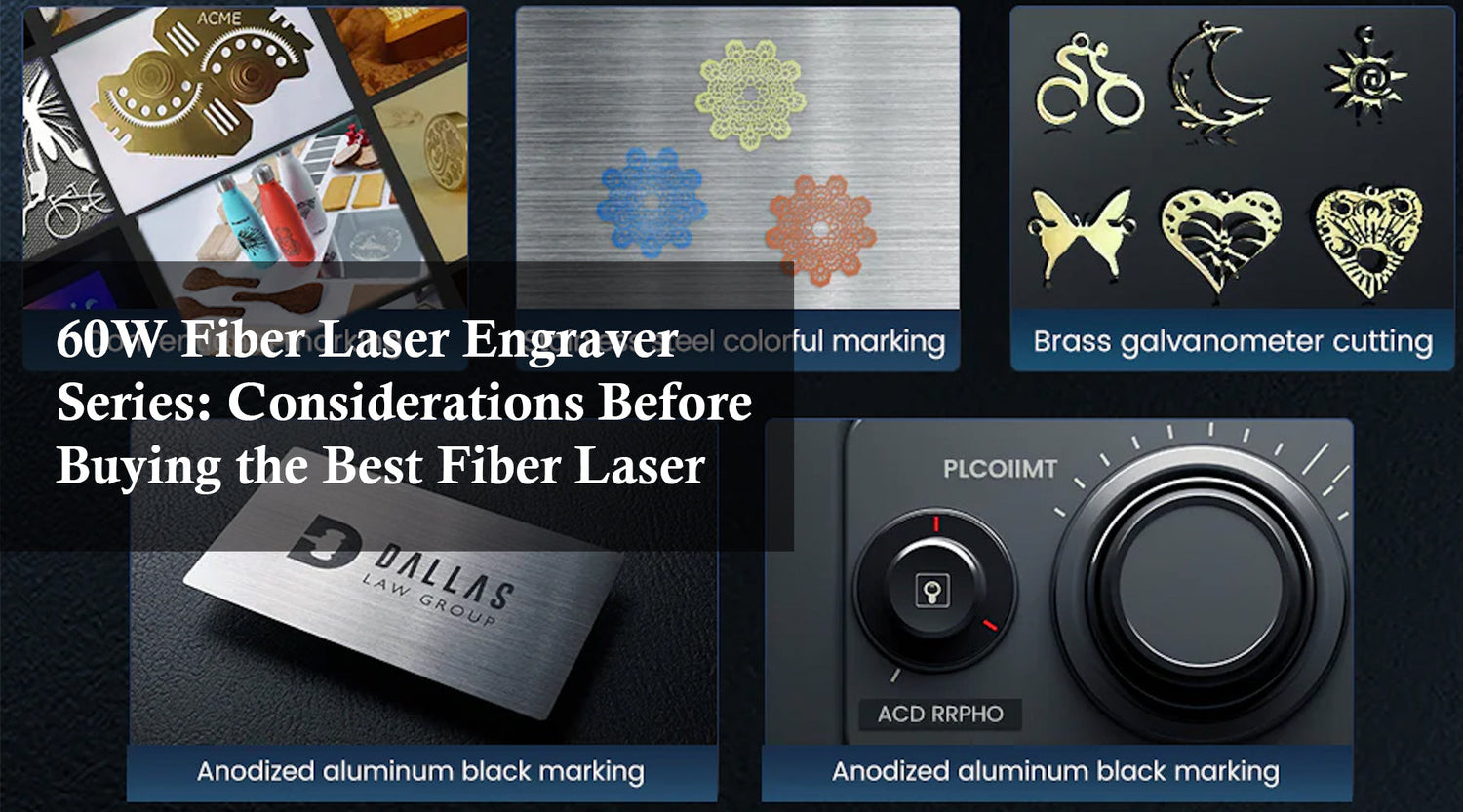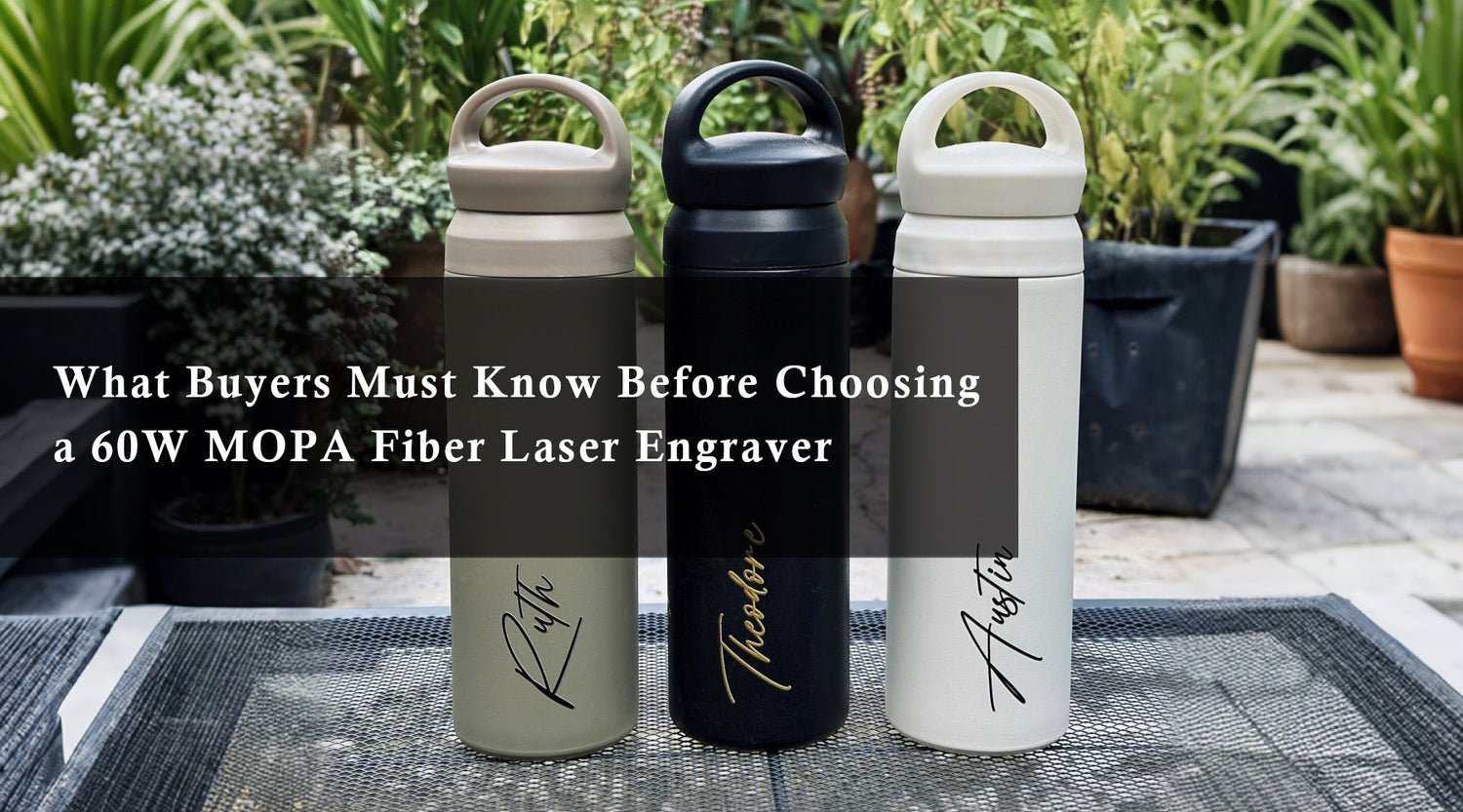Laser cutters May require special protection in the winter to prevent damage from cold temperatures. Cold temperatures can cause the materials used in the laser cutter, such as lubricants and adhesives, to become more viscous and less effective. Additionally, when working with metal surfaces, using black laser marking spray can help maintain high-contrast markings even in colder conditions, ensuring consistent results despite temperature fluctuations., affecting CO2 laserbeschriftung. Additionally, cold temperatures can cause the electronics in the laser cutter to malfunction.
To protect a CO2 laser engraver in the winter, it may be necessary to maintain a consistent, warm temperature in the area where the laser etcher is stored or used, and to use winter-grade lubricants and adhesives. Regular laser machine maintenance is also essential to ensure smooth operation during colder months.
Monport 60W CO2 Laser Engraver & Cutter (24" x 16") with Autofocus
Read More : How to Replace Your CO2 Laser Head
The Benefits of Protect CO2 Laser Engraver in Winter

Preventing damage to the machine:
Cold temperatures can cause the materials used in the laser etcher, such as lubricants and adhesives, to become more viscous and less effective. This may damage moving parts and result in costly repairs. Proper laser machine maintenance ensures longevity and optimal CO2 laserbeschriftung performance. Additionally, when engraving on metal surfaces, using black laser marking spray helps maintain crisp and clear results even in cold conditions.
Ensuring optimal performance:
Cold weather can impair electronic components in the laser etcher, leading to performance issues. Keeping the CO2 laser engraver in a warm environment helps ensure steady operation and prevents issues that could impact CO2 laserbeschriftung precision.
Avoiding downtime:
If a laser etcher is damaged or performing poorly, it can result in downtime and reduced productivity. Protecting the machine during winter safeguards your workflow and preserves consistent CO2 laserbeschriftung output.
Saving on costs:
Proactive care prevents mechanical failures and productivity loss. This includes taking steps to maintain stable winter engraving and reduce costs associated with fixing CO2 laserbeschriftung issues due to temperature drops.
Maintaining output quality:
Cold temperatures can lead to uneven cuts and distorted engraving. Maintaining a warm, stable environment is essential to produce high-quality CO2 laserbeschriftung with consistent results.
How to keep laser cutter from freezing?
In order to prevent freezing of a laser etcher during cold temperatures, it is crucial to take appropriate measures to maintain the proper functioning of the equipment and ensure the safety of the operators.
Adequately insulate the CO2 laser engraver and its surrounding area using materials such as polyurethane foam or fiberglass to prevent freezing of internal components and maintain a consistent temperature within the machine, ensuring optimal performance for CO2 laserbeschriftung. Additionally, using black laser marking spray on metal surfaces can help maintain high-quality, clear engravings even in colder conditions.
Use lubricants and coolants that are specifically designed for low-temperature operations; this will prevent freezing and ensure the proper functioning of moving parts.
Regularly clean the laser cutter, as dust and debris can cause problems in cold temperatures and damage the machine. Laser machine maintenance should be a priority. Additionally, if you're working with metal, using black laser marking spray can help ensure clear, high-contrast markings even in colder conditions, minimizing potential issues with visibility.
Continuously monitor the laser etcher's performance and make adjustments as necessary. This includes checking for abnormal behavior such as unusual noise, vibration, or temperature.
Maintain a consistent and controlled environment for the laser etcher, keeping the working area well-ventilated, avoiding drafts, and keeping openings closed to maintain temperature for optimal CO2 laserbeschriftung results.
Utilize additional heating sources such as heating pads or blankets to keep the laser etcher warm.
Use a temperature controller or thermostat to regulate the temperature inside the laser etcher, ensuring that the temperature remains within the optimal range for operation.
By implementing these measures, the risk of freezing can be minimized, and the laser cutter can be maintained in proper working condition during cold temperatures.

Getting Your Co2 Laser Ready for Winter
To prepare a CO2 laser for winter operation, it is important to take certain steps to ensure the proper functioning of the equipment and to prevent damage caused by cold temperatures. Here are a few steps to consider:
- Insulate the laser and the surrounding area to prevent freezing of internal components and condensation.
- Use appropriate lubricants and coolants that are designed for low-temperature operation.
- Make sure that all seals, gaskets and hoses are in good condition to prevent leaks.
-
Keep the laser clean, as dust and debris can cause problems in the cold. Laser machine maintenance will help keep it in optimal condition.
-
Check the laser's power supply and cooling system to ensure they are functioning properly.
-
Perform a test run of the CO2 laser engraver before using it in cold temperatures to ensure that it is working properly and that all necessary adjustments have been made.
- Monitor the laser's performance closely and be prepared to make adjustments if necessary.
- Use a laser thermometer to check for the temperature of the laser tube, the temperature should be around 25 degree Celsius.
By taking these steps, you can ensure that your CO2 laser is ready for winter operation and that it will perform properly in cold temperatures.

What can I use to keep my chiller water from freezing?
The answer is adding a certain proportion of antifreeze.
When the indoor temperature is between 0 and -10 degrees Celsius, the water-to-antifreeze ratio should be one to one.
When the temperature is below minus 10 ℃, all antifreeze should be used.
When the temperature is around 0 °C, the water-to-antifreeze ratio should be three to one.
Laser Source Safety Precautions in Winter
When using a laser source in cold temperatures, it is important to take certain safety precautions to ensure the proper functioning of the equipment and to prevent accidents. Here are a few safety precautions to consider:
- Make sure it properly insulated someone properly insulated the laser source is properly insulated the laser source the laser source to prevent freezing of internal components.
- Allow the laser source to warm up before use, as cold temperatures can affect the performance of the laser.
- Use appropriate safety gear, such as laser safety glasses, to protect yourself from laser radiation.
- Avoid handling the laser source with cold or wet hands, as this can cause the equipment to malfunction or become damaged.
- Monitor the laser source's performance closely and be prepared to make adjustments if necessary.
- Keep the working area well-ventilated and avoid drafts.
- Keep the windows, door and other openings closed to maintain the temperature inside the workshop.
Conclusion
Be mindful of the risks posed by cold temperatures, including frost and condensation on optical parts. These can degrade beam quality or even pose safety hazards during CO2 laserbeschriftung operations. Regular laser machine maintenance, appropriate use of marking spray, insulation, and temperature control are key to keeping your CO2 laser engraver working reliably through the winter.
Whether you're running a hobbyist setup or a full engraving business, these seasonal precautions will help you protect your investment, maintain output quality, and ensure smooth CO2 laserbeschriftung in any winter condition.











